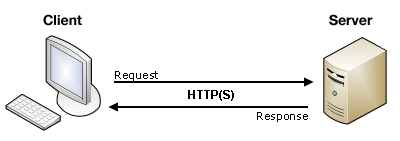 Welcome to Read: 13
Welcome to Read: 13
SENDING FORM DATA
In this Read: 13, I will talk about this topic:
- SENDING FORM DATA.
SENDING FORM DATA
Once the form data has been validated on the client-side, it is okay to submit the form. But what happens when a user submits a form — where does the data go, and how do we handle it when it gets there? We also look at some of the security concerns associated with sending form data.
-
Client/server architecture
- At it’s most basic, the web uses a client/server architecture that can be summarized as follows. a client (usually a web browser) sends a request to a server (most of the time a web server like Apache, Nginx, IIS, Tomcat, etc.), using the HTTP protocol. The server answers the request using the same protocol.
An HTML form on a web page is nothing more than a convenient user-friendly way to configure an HTTP request to send data to a server. This enables the user to provide information to be delivered in the HTTP request.

- At it’s most basic, the web uses a client/server architecture that can be summarized as follows. a client (usually a web browser) sends a request to a server (most of the time a web server like Apache, Nginx, IIS, Tomcat, etc.), using the HTTP protocol. The server answers the request using the same protocol.
-
On the client side: defining how to send the data
-
The
<form>element defines how the data will be sent. All of its attributes are designed to let you configure the request to be sent when a user hits a submit button. The two most important attributes areactionandmethod. - The action attribute
- The action attribute defines where the data gets sent. Its value must be a valid relative or absolute URL. If this attribute isn’t provided, the data will be sent to the URL of the page containing the form — the current page.
- The action attribute defines where the data gets sent. Its value must be a valid relative or absolute URL. If this attribute isn’t provided, the data will be sent to the URL of the page containing the form — the current page.
- The method attribute
- The method attribute defines how data is sent. The HTTP protocol provides several ways to perform a request; HTML form data can be transmitted via a number of different methods, the most common being the GET method and the POST method
- The GET method
- The GET method is the method used by the browser to ask the server to send back a given resource: “Hey server, I want to get this resource.” In this case, the browser sends an empty body. Because the body is empty, if a form is sent using this method the data sent to the server is appended to the URL.
- The GET method is the method used by the browser to ask the server to send back a given resource: “Hey server, I want to get this resource.” In this case, the browser sends an empty body. Because the body is empty, if a form is sent using this method the data sent to the server is appended to the URL.
- The POST method
- The POST method is a little different. It’s the method the browser uses to talk to the server when asking for a response that takes into account the data provided in the body of the HTTP request: “Hey server, take a look at this data and send me back an appropriate result.” If a form is sent using this method, the data is appended to the body of the HTTP request.
- The POST method is a little different. It’s the method the browser uses to talk to the server when asking for a response that takes into account the data provided in the body of the HTTP request: “Hey server, take a look at this data and send me back an appropriate result.” If a form is sent using this method, the data is appended to the body of the HTTP request.
- The method attribute defines how data is sent. The HTTP protocol provides several ways to perform a request; HTML form data can be transmitted via a number of different methods, the most common being the GET method and the POST method
-
For further infromation please click here.

